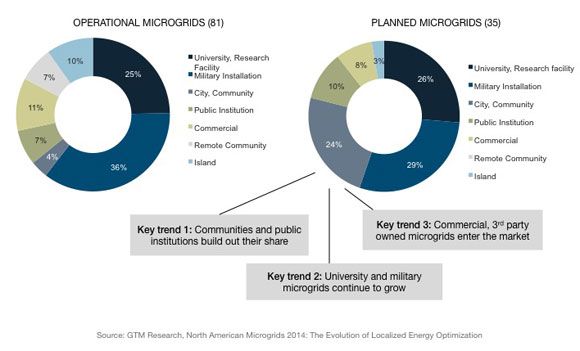Microgrids are the topic du jour in the domain of grid modernization, but at the current juncture, there is far more talk than action. Most of the activity today is happening at universities and military installations, but cities are poised to take a larger role in coming years, according to a recent presentation based on an upcoming report from GTM Research, North American Microgrids 2014: The Evolution of Localized Energy Optimization.

According to Magdalena Klemun, grid analyst with GTM Research, microgrids are currently undergoing a transition from mostly combined heat and power systems that are primarily installed for reliability concerns to becoming more sophisticated systems that integrate renewable energy and distribution networks assets coordinated and controlled within clear geographical boundaries.
“In the future, microgrids will have more market accessibility, more interoperability,” said Klemun.

In smart grid circles, microgrids are often broadly defined. GTM Research has developed a Venn diagram to clarify what a microgrid is, while also acknowledging many of the concepts that can be components of a microgrid, but which by themselves do not constitute a true microgrid.

The demand for more sophisticated microgrids is being driven by cheap natural gas, extreme weather, and falling prices for distributed renewable energy. But there are significant challenges for microgrids if they are going to scale, especially in places where a mostly reliable grid is already in place. Standards and interconnection issues are some of the most significant barriers, with financing another major hurdle.
Even with the hurdles, microgrids are sprouting up across North America, with regional concentrations in California, Hawaii and the Northeast U.S.
For more information, check out GTM Research’s upcoming report, North American Microgrids 2014: The Evolution of Localized Energy Optimization, due out in April. Contact [email protected] with any pre-release inquiries.



